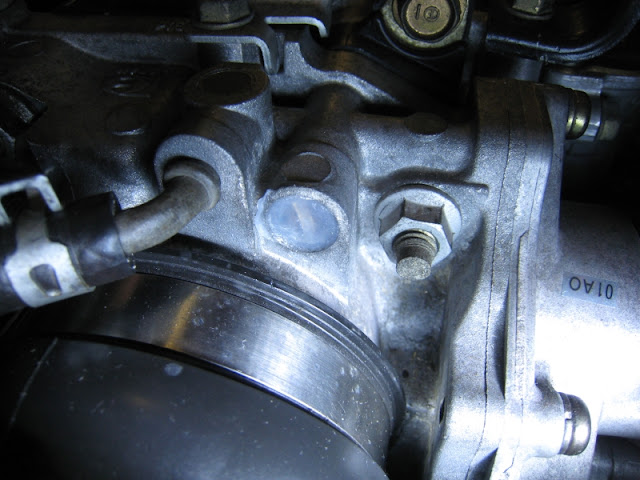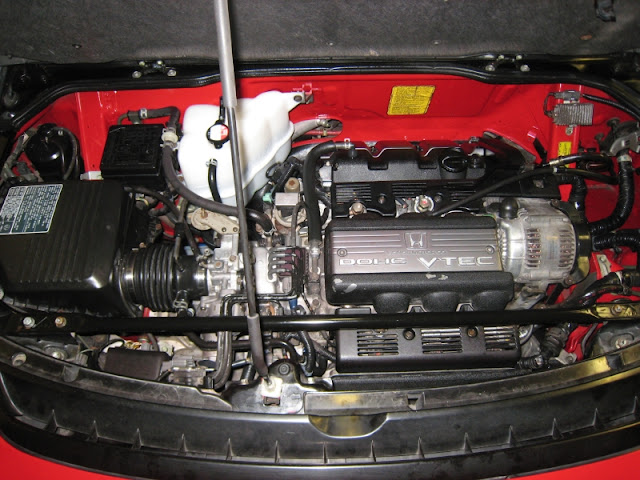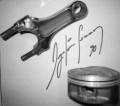Final Touch 02
by , 18-09-2012 at 10:27 PM (2764 Views)
Carried out the test driving session.
It was fairly cool so not too bad when driving with CCU setup at 32degC.
Will adjust the coolant level tomorrow morning.
Exercised the ABS several times until the ABS pump was activated
in order to pressurise the accumulator to the spec and
to adjust the fluid level afterwards.
Brake back to how it should be.
Although it is part of my standard procedure,
specifically paid extra attention on VTEC engagement during
the test driving session and checked for any leakages afterwards as
I have serviced the VTEC spool valve on this engine.
Very strong engine as backed up by the good compression data.
Time to check the idle rpm.
This NSX is non-DBW model so you need to access the EACV.
As reported earlier, someone already touched the idle adjust screw because
the seal paint/lock was already broken.
Also, the screw position was fairly open so although the idle rpm was sitting at
about 850rpm, I knew it was forced by the EACV control.
So, disconnected the EACV and fired up the engine to force the ECU to
trigger the CEL.
Kept the rpm around 1,000rpm and slowly released the TH pedal to
set the no load default rpm at about 600 – 650rpm.
Then, back to 1,000rpm and switched on the rear defogger and head lights
and again, same procedure but this time, the targeted load default rpm is
at 550rpm.
Happy with the adjustment so reset the ECU, reconnected the EACV and
fired up the engine to check the controlled idle rpm at about 800rpm and
kept the engine running for about 15 – 20min to re-learn some of
the fuel timer coefficient.
I had to close the idle adjust screw for about 340deg so almost
one turn which is really big from idle control point of view so
the previous adjustment was done without cleaning the TH butterfly properly.
You must aim the cleaner at specific place depending on the spec of
TH body in order to clean it properly before adjusting the idle rpm.
Locked the idle adjust screw with liquid gasket.
It will stay soft and can be removed with ease if someone needs to
adjust it again in the future but should not be required for many years.
As I use JDM spec TB parts, it comes with small sticker inside the package.
In fact, if you have ever owned JDM cars,
you will notice that similar sticker or metal plate somewhere on the engine or
body panel.
Placed it at the driver side door opening.
Washed the car and while I was drying it, it started to rain…..
I have no idea why it always rains when I want to wash anyone’s NSX......
After many weeks, finally the service is done.
Spent ages just for cleaning the external and internal of this engine but
it was rewarding once you noticed the changes in engine sound and
strong compression/leak down data after the service.
As my Engine Refresh service goes so much in detail,
you only need it every 10 years.
So, if your TB service interval is every 5 years or 60k miles whichever
comes first (any Honda cars registered before Jul/98 for UK models),
just take the standard service (from what I heard and based on talking to
some people there, I can only recommend Norton Way Honda) in
5 years time and then come back to me for the Engine Refresh every 10 years.
Thank you for using my service and hope you will enjoy your NSX for many years.
Regards,
Kaz








 Email Blog Entry
Email Blog Entry

